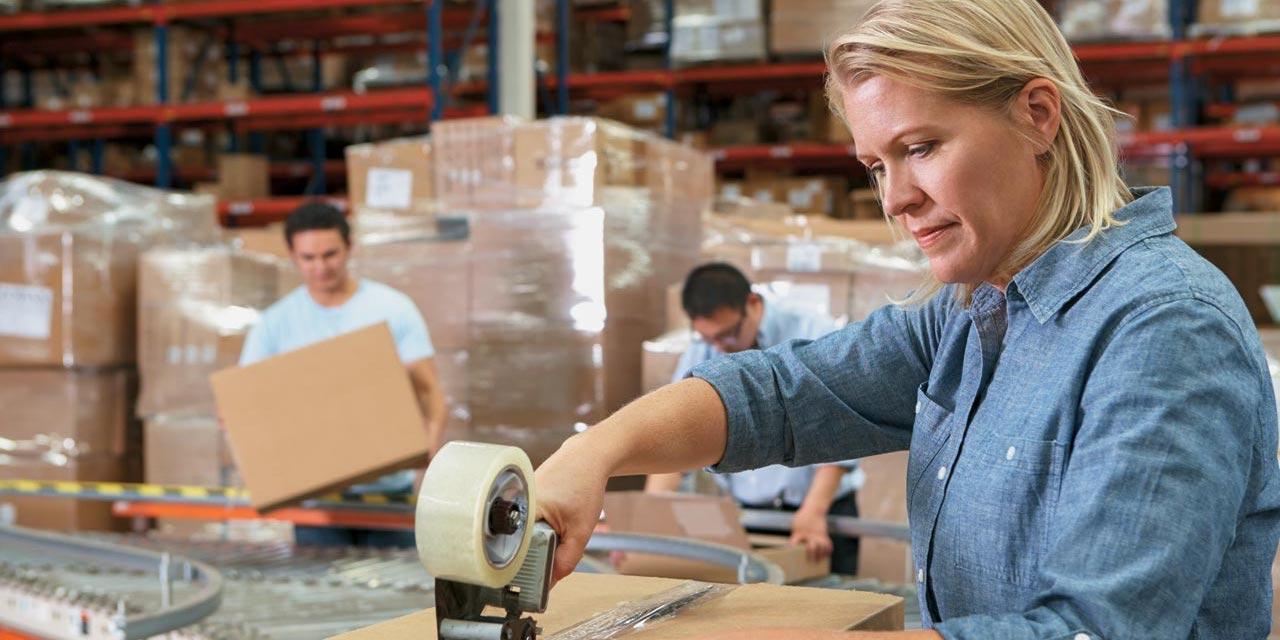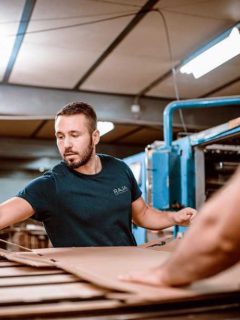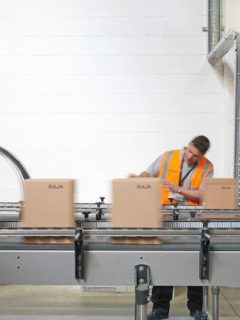Over the years, your customers have become more and more demanding. Ever shorter delivery times, personalised orders, careful customer experience… they expect special attention from your company. It is in this context that the packing station, also known as a packing table or packing station, has become a key part of the supply chain.To make an informed choice about your packing station and its optimisation, we have designed a guide dedicated to the subject. Don’t hesitate to download it now:
 And to get an overview of it, as well as a few concrete leads to get you thinking, discover in the rest of the article the keys to choosing your packing stationSUMMARY :
And to get an overview of it, as well as a few concrete leads to get you thinking, discover in the rest of the article the keys to choosing your packing stationSUMMARY :
- Why think about your packing station?
- The structure of the table: the essential step
- The layout of the packing station: the choice of options

Why should you think about your packing station?
This is a legitimate question, and leads to some interesting logistical issues. The primary objective of your thinking should be to improve the performance of this logistical station. You are aiming for greater productivity and speed, for time-optimised packing and dispatch. To do this, don’t hesitate to think, right now, about the type of products your operators pack on a daily basis. This will enable you to estimate the space needed for them to work properly, and to make the most of the order preparation space. Optimising your packing station also means preventing Musculo-Skeletal Disorders among your order operators. So don’t hesitate to observe their daily practices, and to talk to them about your packing station project, to really optimise their working conditions
- A simple packing table (a simple table on which to pack parcels) is a good place to start, but it can quickly become insufficient, as a real packing station, designed to match your daily practices, could increase the performance of your warehouse from the start.
- If you pack heavy and/or large packages, you will need a table, without shelves that interfere with the operator during packing
- If you also have small orders to pack, it is better to have a packing station (i.e. a table, but also shelves, supports for dunnage rolls, etc.).
you are now ready to think about the ideal packing station for your activity.
The structure of the table: the essential step
If you have followed our advice, you have determined the type of products that you pack on a daily basis. Thanks to this type, you will now be able to choose the structure of your packing table, according to the type of product
- The size of the packing station and the weight it can support– check this carefully. In the RAJA complete package, created in cooperation with logistics experts, you can choose between 160 or 200 cm in length. This packing station can support up to 300 kg of load.
- The feet are adjustable for better ergonomics and optimised operator rotation.
- The layout of the entrance to the workstation: you can place rolls, trolleys, shelves or wheeled bins there, so that the products to be packed can be easily brought to the operators.
- The exit area can be equipped with trolleys, crates, pallet boxes or a conveyor belt to take your packages to the shipping docks.
also consider the unwinders, which can be located either at head height or underneath the table, and which can be used for bubble, foam or kraft film. Practical! Thelayout of the packing station: the choice of optionsYou can then think about adding additional elements to the different parts of your table, which will make it a real packing station, adapted to your needs.RAJA’s tip beforehand: Keep the 5S method in mind when organising your packing station. If you’re not familiar with this method,don’t hesitate to have a look at our guide dedicated to this subject.
Thelayout of the packing station: the choice of optionsYou can then think about adding additional elements to the different parts of your table, which will make it a real packing station, adapted to your needs.RAJA’s tip beforehand: Keep the 5S method in mind when organising your packing station. If you’re not familiar with this method,don’t hesitate to have a look at our guide dedicated to this subject.
The elements at the top of your station
 This is where you should place elements that allow operators to access, by simply reaching out, materials that they use frequently. So think about integrating
This is where you should place elements that allow operators to access, by simply reaching out, materials that they use frequently. So think about integrating
- A top shelf that can accommodate flat-pack cartons
- An organisation system, such as dividers, for storing cardboard boxes
- A metal accessory shelf for the supply of small packaging parts
elements at operator height
 This is where the most frequently used elements will be placed, or where they need to be laid flat, so you can add to the structure of your packing station
This is where the most frequently used elements will be placed, or where they need to be laid flat, so you can add to the structure of your packing station
- Computer screen and keyboard supports for order picking and monitoring of ongoing operations
- A layout board or a barcode label printer holder
- An additional support, such as a side table, to place a scale or a paper or air cushioning system
- A shelf, a box for a European standard tray, or a drawer, for better organisation and storage of small tools
- An unwinder and a cutting rule for wrapping paper
elements at the bottom of your workstation
 To limit RSI as much as possible, your operators must avoid leaning too far towards the floor. This is why this area of your packing station will be reserved for elements that are used less often, or that do not need to be gripped with the full hand. You can think of
To limit RSI as much as possible, your operators must avoid leaning too far towards the floor. This is why this area of your packing station will be reserved for elements that are used less often, or that do not need to be gripped with the full hand. You can think of
- A 2nd unwinder shaft, under the table
- A side table (withcastors if necessary) for an additional element (a scale, for example)
- A paper or plasticwedging machine on a stand, if your production rate requires it
most of the elements described above are integrated in the RAJA complete package.This complete package will allow you to start optimising your packing station in a simple way. The special thing about it is that it is standard, but scalable, so you can start increasing the productivity of your operators, while keeping more customisation in mind later on. And if you already feel the need fora truly customised packing station, try our online 3D configurator. You will add the elements you need and choose a structure that suits your product typology.















